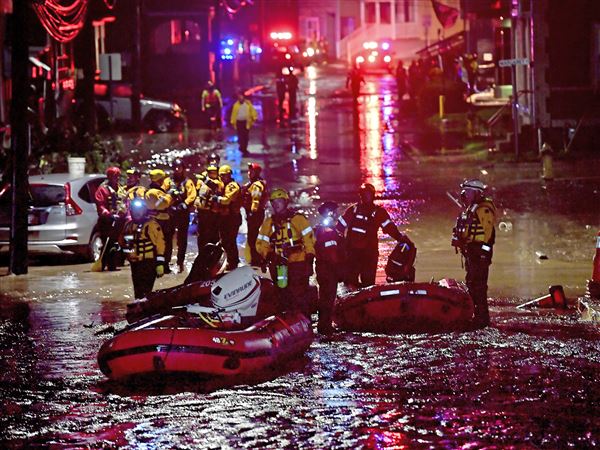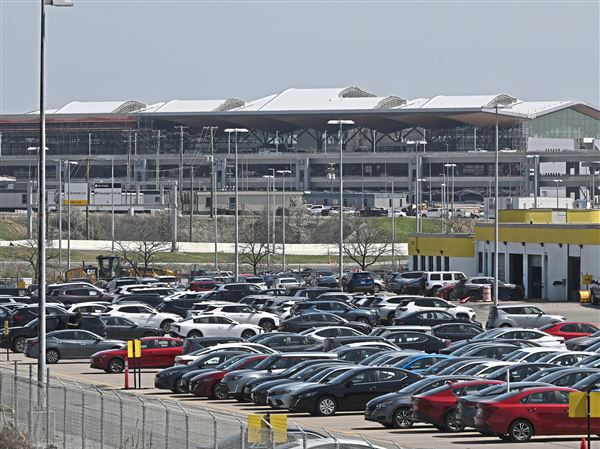WASHINGTON — The Obama administration considered national standards to control explosive gas in oil trains last year but rejected the move, deciding instead to leave new rules to North Dakota, where much of the fuel originates.
Current and former administration officials told Reuters that they were unsure if they had the power to force the energy industry to drain volatile gas from crude oil originating in North Dakota’s fields. Instead, they opted to back North Dakota’s effort to remove the cocktail of explosive gas — known in the industry as “light ends” — and rely on the state to contain the risk. North Dakota’s regulations come into force next month.
The administration’s internal debate shows that concern about the risks associated with oil trains reached the upper level of the White House. But the administration balked at addressing the problem in new regulations governing crude oil trains that it is preparing to introduce this spring.
When Transportation Department and White House officials convened on this issue last summer, the administration decided to back North Dakota’s plan to limit vapor pressure — a measure that was just taking shape at the time. “The Department of Transportation supported North Dakota on treatment of crude oil in the field,” a White House official said in an interview.
But a growing number of safety advocates say relying on North Dakota is not sufficient to regulate a product that is hauled thousands of miles of track and across many state lines. “These trains are going all across the country, so it absolutely has to be the feds who are in charge,” said Karen Darch, mayor of Barrington, Ill., where several oil and ethanol trains pass through her town weekly.
On Thursday afternoon, a BNSF Railway train loaded with crude oil derailed in a rural area south of Galena, Ill., with two of the tank cars catching fire, according to local officials and the company. Local TV published images of dark smoke rising from the area where the incident occurred, and the Illinois Environmental Protection Agency told local WREX.com that initial reports suggested that two cars were on fire.
The train with 105 loaded cars — 103 of them carrying crude oil — derailed about 1:20 p.m. CST, according to a BNSF statement. The incident occurred on what appears to be a major rail line alongside the Mississippi River that handles as many as 50 oil-trains a week, one official said.
It was not immediately clear where the train originated or where it was heading. Chicago, 160 miles east, is a major rail hub for shipments from both North Dakota and Canada’s oil sands.
BNSF said there were no reported injuries and no evacuations. The Berkshire Hathaway Inc unit said it did not know what had caused the derailment, which occurred about 3 miles outside Galena, a town of just more than 3,000 people on the border with Wisconsin. Eight cars derailed, six of which had tumbled onto their side, according to Galena City Administrator Mark Moran.
Last summer, Transportation Secretary Anthony Foxx took his concerns about Bakken fuel to the White House and sought advice on what to do about the danger of light ends, according to sources familiar with the meeting, who were not authorized to speak publicly about the matter.
By then, Mr. Foxx had spent more than 12 months weighing safety measures that would prevent oil train derailments from becoming fiery disasters like the 2013 Lac Megantic tragedy in Canada, in which 47 people were killed by a runaway Bakken train delivery.
The Transportation Department was warning that Bakken fuel was uncommonly volatile and explosion-prone. Mr. Foxx’s agency conceived an oil train safety plan in July with an array of measures that aimed to make sure oil train cargo moved safely on the tracks: Tankers would have toughened shells. Oil train deliveries would slow down. Advanced braking systems would be adopted.
But the rule would do nothing to limit volatile gas. Mr. Foxx brought his concerns about the unresolved issue of dangerous gas, commonly measured as vapor pressure, and his agency’s limited power to curtail the problem to President Barack Obama’s chief of staff, Denis McDonough. The administration decided to let the existing oil train safety plan remain.
“Before the meeting, the department had already identified issues with the characteristics of the crude oil, including vapor pressure, and had developed potential strategies related to the overall improvement and safety of the transport of the product and how the industry could treat it,” the White House official said.
Transportation Department spokeswoman Suzanne Emmerling said Thursday that “neither the White House or anyone in any department has ever balked at improving the safety of this product in any way. The Department looked closely at every aspect of the transportation of flammable products by rail — including vapor pressure, tank cars and rail operations — and ultimately submitted a rule that we believe will raise the bar” on safety.
Ms. Emmerling declined to comment on why the Transportation Department did not include vapor pressure controls in its oil train proposal last year.


















